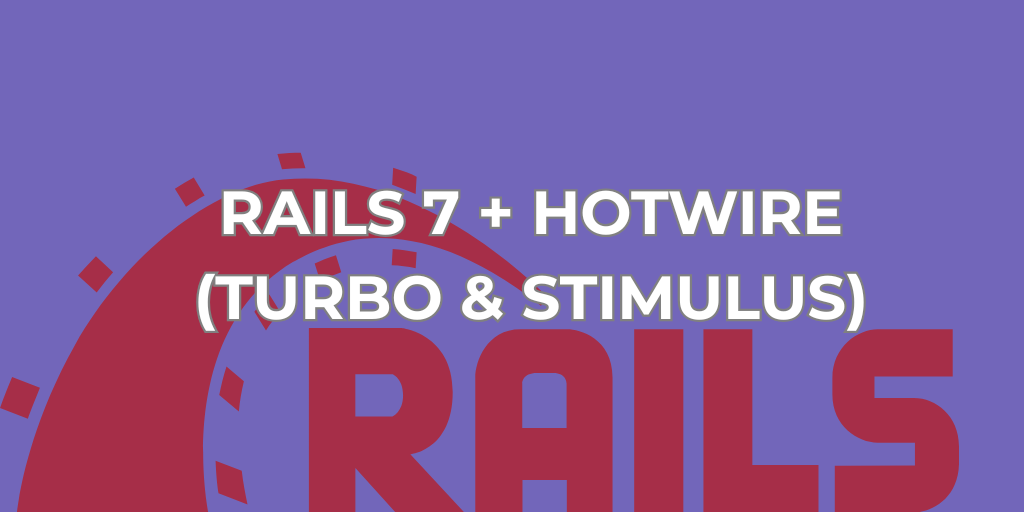
Introduction
With the release of Rails 7, a powerful shift occurred in how we build modern web applications — thanks to Hotwire, which includes Turbo and Stimulus. Rails now provides a way to build fast, modern frontends without writing complex JavaScript frameworks like React or Angular.
In this guide, we’ll explore:
- What Hotwire is (Turbo + Stimulus)
- Why Rails 7 recommends it
- How to set up and use Hotwire in your Rails 7 project
- A basic example using Turbo and Stimulus
What is Hotwire?
Hotwire (HTML Over The Wire) is a framework introduced by Basecamp (creators of Rails). It speeds up web applications by replacing JavaScript-heavy frontends with fast HTML streaming.
Hotwire consists of:
- Turbo: Replaces the need for most JavaScript by speeding up navigation and form submissions.
- Stimulus: A modest JavaScript framework for handling small interactivity pieces.
Together, they offer a lightweight, server-driven approach to modern web apps.
Why Rails 7 Promotes Hotwire
Rails 7 removes Webpacker by default and tightly integrates Hotwire. Here’s why:
- Zero configuration for frontend
- Super-fast page loads with Turbo
- Less dependency on React or Vue
- Built-in support with rails new
Hotwire encourages stimulus-driven interactivity over bloated front-end SPAs.
Setting Up Hotwire in Rails 7
1.Create a new Rails 7 project (with Hotwire)
rails new hotwire_demo --css=tailwindThe --css=tailwind part is optional but works well with Turbo.
2.Add Hotwire (Turbo + Stimulus)
Rails 7 comes with Hotwire support out-of-the-box. If you’re adding to an existing app:
bundle add turbo-rails
bundle add stimulus-rails
bin/rails turbo:install
bin/rails stimulus:installThis command:
- Adds Turbo to application.js
- Creates controllers/ folder for Stimulus
- Updates HTML layouts with Turbo tags
Turbo Basics
Turbo has three major components:
Turbo Drive
Automatically intercepts page loads and turns them into AJAX requests — your app feels like a single-page app, but without JavaScript routing.
<%= link_to "Dashboard", dashboard_path, data: { turbo: true } %>
Turbo Frames
Let you replace part of a page instead of the whole page.
<turbo-frame id="user_list">
<%= render @users %>
</turbo-frame>Turbo Streams
Push real-time updates to the DOM using ActionCable or response updates.
<%= turbo_stream_from "messages" %>Stimulus: Add JavaScript Where You Need It
Stimulus lets you sprinkle JS in HTML.
Example: Toggle Button
Create a controller:
bin/rails generate stimulus toggle
In toggle_controller.js:
import { Controller } from "@hotwired/stimulus"
export default class extends Controller {
static targets = ["content"]
toggle() {
this.contentTarget.classList.toggle("hidden")
}
}
In your view:
<div data-controller="toggle">
<button data-action="click->toggle#toggle">Toggle</button>
<div data-toggle-target="content" class="hidden">Hello Stimulus!</div>
</div>
Benefits of Using Hotwire in Rails
- Lightning-fast UIs without complex JS
- Tightly integrated with Rails 7
- Smaller JavaScript bundle size
- Easier to maintain
- Faster page navigation and updates
Conclusion
Rails 7 + Hotwire (Turbo & Stimulus) makes building modern web applications simpler and faster. You can achieve SPA-like speed and interactivity without needing a full frontend framework. If you’re tired of the complexity of React/Vue, give Hotwire a try — it may completely change how you build apps.
Looking for more Rails guides? Check out SaasTrail’s advanced Rails guides for practical tips and advanced development patterns.


